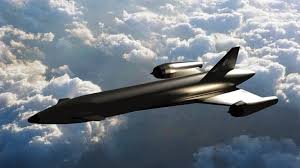
Breaking News
 Is DIY Spray Foam A Scam? I Tested It On A Shed
Is DIY Spray Foam A Scam? I Tested It On A Shed
 Senior Russian General Killed in Moscow Car Bombing
Senior Russian General Killed in Moscow Car Bombing
 Silver's Epic Rally Signals Bitcoin's Imminent Collapse
Silver's Epic Rally Signals Bitcoin's Imminent Collapse
 Tulsi's Assessment That Putin Doesn't Want To Conquer All of Ukraine Is Absolutely Correct
Tulsi's Assessment That Putin Doesn't Want To Conquer All of Ukraine Is Absolutely Correct
Top Tech News
 Travel gadget promises to dry and iron your clothes – totally hands-free
Travel gadget promises to dry and iron your clothes – totally hands-free
 Perfect Aircrete, Kitchen Ingredients.
Perfect Aircrete, Kitchen Ingredients.
 Futuristic pixel-raising display lets you feel what's onscreen
Futuristic pixel-raising display lets you feel what's onscreen
 Cutting-Edge Facility Generates Pure Water and Hydrogen Fuel from Seawater for Mere Pennies
Cutting-Edge Facility Generates Pure Water and Hydrogen Fuel from Seawater for Mere Pennies
 This tiny dev board is packed with features for ambitious makers
This tiny dev board is packed with features for ambitious makers
 Scientists Discover Gel to Regrow Tooth Enamel
Scientists Discover Gel to Regrow Tooth Enamel
 Vitamin C and Dandelion Root Killing Cancer Cells -- as Former CDC Director Calls for COVID-19...
Vitamin C and Dandelion Root Killing Cancer Cells -- as Former CDC Director Calls for COVID-19...
 Galactic Brain: US firm plans space-based data centers, power grid to challenge China
Galactic Brain: US firm plans space-based data centers, power grid to challenge China
 A microbial cleanup for glyphosate just earned a patent. Here's why that matters
A microbial cleanup for glyphosate just earned a patent. Here's why that matters
 Japan Breaks Internet Speed Record with 5 Million Times Faster Data Transfer
Japan Breaks Internet Speed Record with 5 Million Times Faster Data Transfer
This Hypersonic Space Plane Will Fly From London to N.Y.C. in an Hour

After the NASA space shuttle was retired in 2011, it seemed like space planes might become relics. But they are on a comeback. U.S. companies Sierra Space Corp., Dawn Aerospace, and Radian Aerospace have all introduced their own versions of an aircraft that takes off like a plane, but soars like a rocket. Virgin Galactic soon plans to introduce the Delta version of its space plane. Among militaries, the U.S. Air Force operates a robotic orbital space plane called the X-37B, while China has a similar aircraft called Shelong.
The European Space Agency (ESA) recently jumped into the burgeoning space-plane sector, announcing funding for a new research program called Invictus, which will develop a hypersonic space plane capable of Mach 5 (3,386 mph). The aircraft could fly from London to New York in an hour. If plans stay on track, it could be operational by 2031.
U.K. consulting firm Frazer-Nash will lead the project, which will use technology developed by Reaction Engines Ltd., a private firm launched in 1989 that previously designed a space plane called Skylon. That, in turn, was based on a 1982 concept called the Horizontal Take-Off and Landing (HOTOL) space plane. Last year, Reaction Engines ran into financial difficulties and went out of business.
Invictus plans to incorporate the "pre-cooler" technology from Reaction's SABRE (Synergetic Air-Breathing Rocket Engine) for its new aircraft. Combining aspects of jet and rocket propulsion, the engine pulls oxygen out of the air at lower atmospheric levels to reduce the need to carry propellant, resulting in a much lighter, more efficient aircraft. In space, it will be fueled by liquid hydrogen.
"Aircraft that fly at hypersonic speeds—more than five times the speed of sound—face extremely high temperatures due to shock heating and the friction from the air," a Frazer-Nash rep told Space.com. "Typical aircraft engines cannot operate in these conditions, as the air is too hot to handle." The pre-cooler technology, which chills superheated air in a fraction of a second, has already been successfully tested on conventional jet engines. "It allows these aircraft engines to travel at hypersonic speeds," says the rep.
If Invictus reaches its full potential, it could help unlock the next generation of space planes. "We are laying the foundation for aircraft that take off like planes and reach orbit like rockets—revolutionizing both terrestrial and orbital transportation," said Tomasso Ghidini, head of ESA's mechanical department in a statement. "That will redefine how we move across the planet and reach beyond it."



